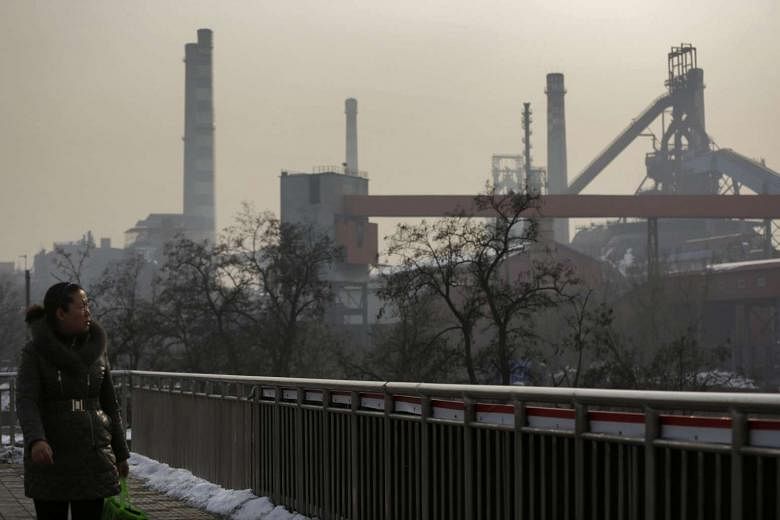PARIS: Rapid growth in carbon dioxide (CO2) emissions from burning fossil fuels has stalled over the past two years, largely due to falling coal use in China and growing investment in green energy, a benchmark study released today showed.
The report from the Global Carbon Project, a collaboration of scientific institutions, is an annual health check on the planet and a leading analysis on carbon emissions trends.
The report said that for the second year running, CO2 emissions from fossil fuel consumption and cement production last year grew by only 0.6 per cent, a sharp drop from the 2.4 per cent annual growth for the decade before.
The authors said the slower growth was attributed largely to a drop in coal consumption in China plus below-average growth in global demand for oil and natural gas, and continuing growth in renewable energy investments.
"We may be entering a new era," said Dr Josep Canadell, a Project executive director and one of the study's authors.
"We're not trying to suggest that this is the global peak for emissions.
"But we're starting to see the first signals of a slowing trend in the growth," he told The Straits Times from Canberra, Australia.
The findings are a boost for United Nations-led climate talks in Paris, France, that aim to seal a global deal to fight climate change.
For this year, based on data
from June to October, the authors suggest CO2 emissions could decline by 0.6 per cent compared with last year.
Dr Canadell said global emissions may still grow till 2030 but perhaps at a slower rate.
What happens in China,which produces a quarter of global greenhouse gas emissions, is key.
"There are two things that are absolutely astonishing about China. One is that perhaps coal has peaked. China has said in the past two years that they want to peak coal consumption. The other astonishing number is the growth of energy in China - 58 per cent came from non-CO2 sources," he said, pointing to a structural shift in the country's economy.
The growth was mostly from hydropower and nuclear, but wind and solar were an increasing part of the mix.
Installed wind capacity reached 370 gigawatts (GW) last year, including 51GW of newly installed capacity last year, the study said.
China is the world's largest producer of wind energy and last year, it installed 23GW of new wind capacity. Globally, total installed solar photovoltaic capacity jumped from 3.7GW in 2004 to 178GW last year, with 40GW of new capacity.
Dr Canadell said there were still worrying trends, particularly growing emissions from developing nations which are investing heavily in coal-fired power stations.
And forest and land fires in Indonesia could end up showing this year's CO2 emissions actually rose when the final estimates are made next year.


